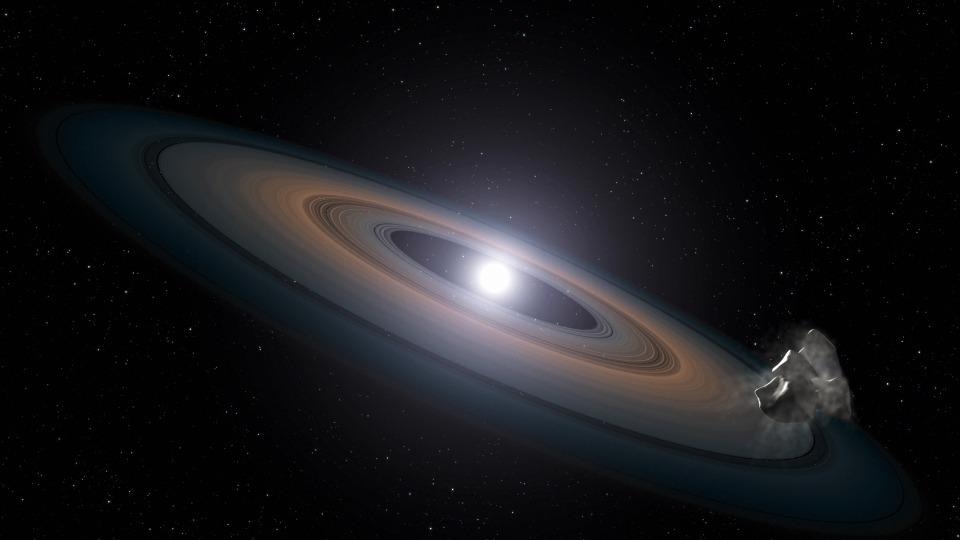Once, white dwarfs were regular stars akin to the Sun but then disintegrated after depleting all their fuel. These interstellar fragments have historically been tough to examine. However, new research from Lund University in Sweden provides fresh data about the movement patterns of these mystifying stars.
 Illustration of a white dwarf. Image Credit: NASA, ESA, STScI, and G. Bacon (STScI).
Illustration of a white dwarf. Image Credit: NASA, ESA, STScI, and G. Bacon (STScI).
The radius of white dwarfs is around 1% of the Sun’s. They possess nearly the same mass, which means they possess an astounding density of approximately 1 ton per cubic centimeter. After billions of years, white dwarfs will cool down to a level where they no longer will release visible light and change into supposed black dwarfs.
The initial white dwarf that was spotted was 40 Eridani A. It is a bright cosmic body 16.2 light-years from Earth, enclosed by a binary system comprising the red dwarf 40 Eridani C and the white dwarf 40 Eridani B.
Since its discovery in 1783, astronomers have attempted to study more about white dwarfs so as to gain a deeper insight into the evolutionary history of the earth’s galaxy.
In a research article published in the journal Monthly Notices of the Royal Astronomical Society, new findings were presented about how the collapsed stars travel.
Thanks to observations from the Gaia space telescope, we have for the first time managed to reveal the three-dimensional velocity distribution for the largest catalogue of white dwarfs to date. This gives us a detailed picture of their velocity structure with unparalleled detail.
Daniel Mikkola, Doctoral Student in Astronomy, Lund University
As a result of Gaia, scientists have measured velocities and positions for around 1.5 billion stars. However, only recently have they begun to focus solely on the white dwarfs in the solar neighborhood.
We have managed to map the white dwarfs' velocities and movement patterns. Gaia revealed that there are two parallel sequences of white dwarfs when looking at their temperature and brightness. If we study these separately, we can see that they move in different ways, probably as a consequence of them having different masses and lifetimes.
Daniel Mikkola, Doctoral Student in Astronomy, Lund University
The findings can be used to formulate new models and simulations to continue to chart the formation and history of the Milky Way. Through in-depth understanding of the white dwarfs, the scientists hope to be able to answer several questions concerning the dawn of the Milky Way.
“This study is important because we learned more about the closest regions in our galaxy. The results are also interesting because our own star, the Sun, will one day turn into a white dwarf just like 97 percent of all stars in the Milky Way”, concludes Daniel Mikkola.
Journal Reference:
Mikkola, D., et al. (2022) The velocity distribution of white dwarfs in Gaia EDR3. Monthly Notices of the Royal Astronomical Society. doi.org/10.48550/arXiv.2202.07672.